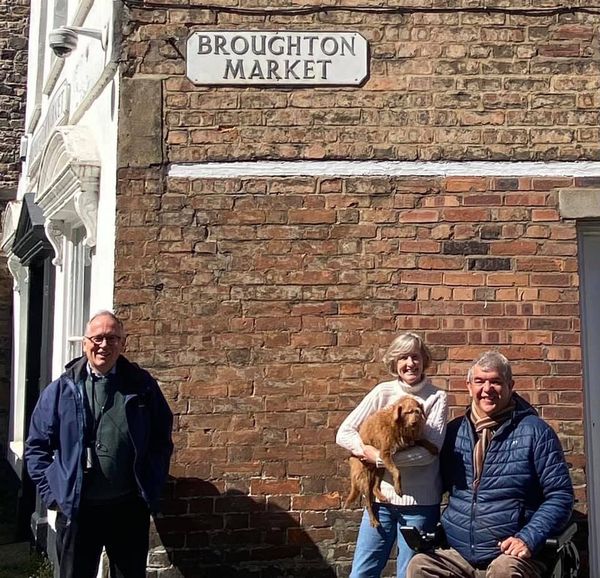Blue Badge guide Alistair Hector rises to the challenge of creating an accessible walking tour route through Edinburgh’s historic New Town
A few weeks ago, I was asked to do a guided walk around the Eastern New Town with a small family group, one of whom is reliant on a wheelchair (one of those solid self-propelled types). The New Town? Wheelchair? That’s easy enough, isn’t it? Actually, it took more care and planning than you might imagine, but we had a great time together. I think their wee dog did too.

Edinburgh generally has good infrastructure for accessibility. As far as the New Town is concerned, the kerbs at most road junctions are ramped to enable wheelchairs, buggies and prams to cross. However, often there is an accessible route on one side of the street or square and not the other. For example, Charlotte Square has kerb ramps at its South-West and South-East corners and at the junction with George Street, making wheelchair access to the North side not impossible but certainly trickier. And those kerbs are high, built as they were for the wealthy and privileged early New Town residents who would travel by horse-drawn carriage. It is a similar picture in Drummond Place.
So you have to keep an eye on the kerbs, and as for the setts! There are lots of them in Edinburgh. I am a cyclist and I hate setts! But at least as a cyclist you can stand up from the saddle and use your legs as shock absorbers, or you can get up a bit of speed to ride the bumps. A wheelchair user cannot. Losing track of the accessible route can result in extra stretches of bumping along till the next kerb ramp appears.

Inclines, battery range, pavement widths, and narrow gaps also have to be considered. Our route went down to the Water of Leith and the Stockbridge Colonies. Going down was fine – an easy incline on a good path (also used by cyclists) through George V Park (to see the spectacular Scotland Street Tunnel) was part of it.
My plan was to regain height from the valley via the aptly named ‘Snakey’, the path that connects Glenogle Road and Saxe Coburg Place. The bottom end is protected from the street by a barrier, and I was anxious about the space between it and the gap in the wall leading to the path. So on my next recce I took a tape measure with me. As I was measuring, a workman in overalls passed and gave me a quizzical look. My explanation was met with a grumpy “sa bit ticht” (“It’s a bit tight”) as he left me to my geometry. Fortunately, the gap was “ticht”, but not too “ticht”, and the short-cut proved very handy.

So what’s the message here? Edinburgh is a historic, hilly city , and, yes, it does present challenges for wheelchair users, but I have learnt from this and other walks that there is a huge choice of attractive accessible routes, including the ‘classics’ in the Old and New Towns. Edinburgh is a rewarding and enjoyable place to explore for all visitors, whether on foot or on wheels.
But, fellow guides, it goes without saying that walks with a wheelchair user need especially careful planning. “Recce, recce, recce” is the motto. Get to know each and every kerb ramp on the route, and the alternatives if you miss one during your walk; check the inclines, surfaces and widths of all paths along the way to ensure they are suitable for your guest’s wheelchair (it helps to find out the wheelchair’s spec in advance if you can); allow for the fact that a wheelchair user sees the sights from a different angle from others.

And have fun! Your wheelchair-reliant guest(s) will be as keen as you are to make the walk a pleasure and success for everyone in the group, and there is great enjoyment to be had in that working together.

Blue Badge guides can create accessible tour routes throughout the city as well as providing suggestions and advice on places to visit for visitors with disabilities. Here’s a selection of the many websites with tips for visiting Edinburgh with a wheelchair:
Visit Scotland: Wheelchair Friendly



Leave a Reply